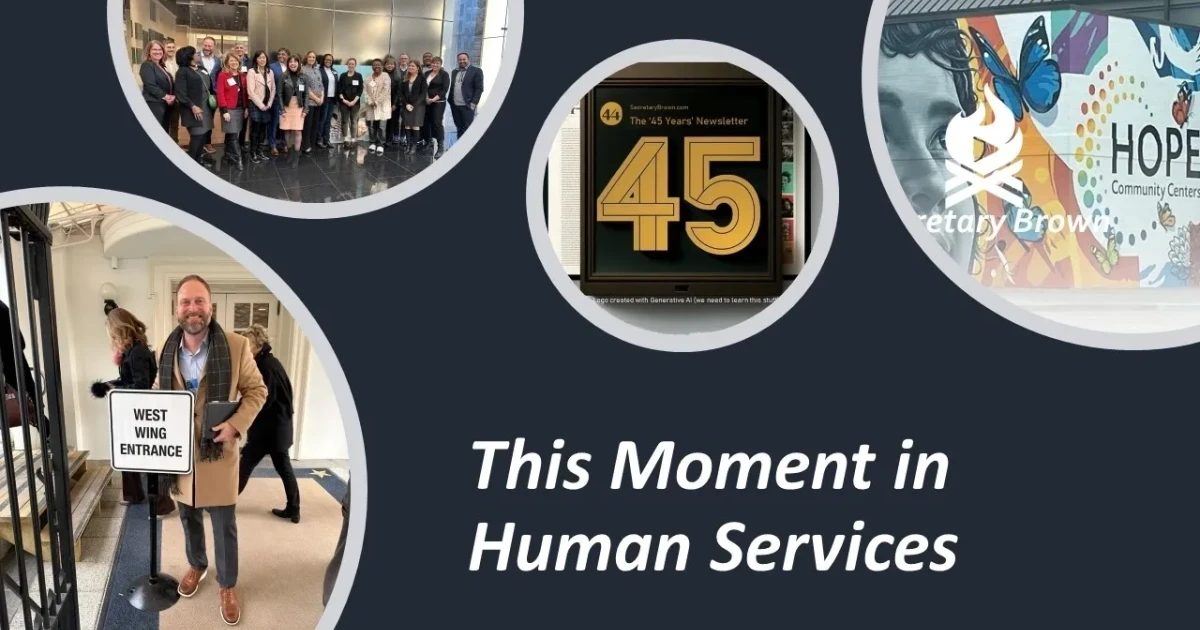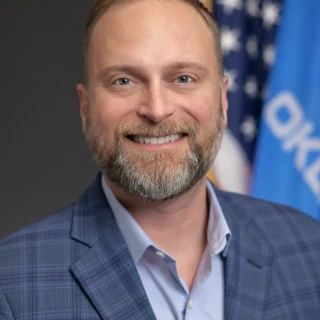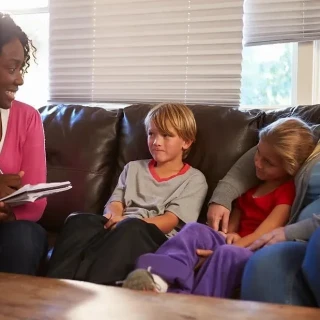'45 Years' Newsletter | This Moment in Human Services

Thesis: Forty-five years represents my lifetime. It also represents a millennium of changes - some good, some bad - in the human services space. This newsletter asks the question, “Can we do human services better, so that in 45 years those that follow see us as forward-thinking change agents, not as those that squandered their opportunity to improve systems for children and families?”
Story:
Last week, I was sitting in the Roosevelt Room in the west wing of the White House (of course, thankful for the honor of the invitation) with about a half dozen other state human services leaders and a half dozen federal agency leaders. The conversation was the most recent in an intentional effort to discuss the needs of state human services organizations, alongside our federal agency partners, to continue to transform our work into becoming a modern service delivery system.
The conversation was productive, and I am thankful for that, but the outcome of that conversation that I wanted to share in this newsletter is what occurred to me as I listened to each of the other state leaders in the room. Many of these people I consider to be friends, but all of them I now consider to be fellow warriors. The last three years, weathering a global pandemic and shepherding some of the largest essential workforces in our country has strengthened the resolve of some of the strongest people that I know. These people balance the need to show incredible compassion and understanding with the pressure and burden of that daily email that they each receive with the crushing details of every child death and near death in their state, many of which are examples of the real brokenness and humanity that leaders in human services see regularly. They attempt to rally an exhausted workforce towards mission, while putting their own trauma and the burden of their position on the back burner.
Sitting in the Roosevelt Room, I couldn’t take my eyes off these passionate state human services leaders whose character has been galvanized by this storm, yet who’s vision has become even more clear in what their family serving systems should look like. They were kind and collaborative in the conversation, yet forward thinking vision casters with hands calloused from the fight and resolve strengthened to transform.
CONTINUED BELOW…
Three Bullets:
Today’s human services leaders are coming out of the challenges of the pandemic with greater resolve, passionately pursuing a vision for a contemporary human services system.
The leaders that I know today are focused on serving their customers and their workforce in new ways, as we know that the ways of the past have created a system mostly ineffective in reaching the true outcomes with meaning for families, mostly centered in breaking multi-generational cycles of poverty.
These leaders see incredible trauma that no one can truly understand, and they bear the some of the toughest burdens in our nation. Despite this reality, they continue to serve because in this moment they are collectively building a pathway for a future system… and they don’t want to miss it.
Lessons Learned:
Although words may be different, the missionis consistent. Human services leaders across the nation want to build a system that ends multi-generational poverty.
The overall human services workforce are heroes who constantly put the wellbeing of others ahead of their own. People come into these difficult spaces for a reason. Many bring their own trauma to the work, while others are deeply committed to addressing the trauma that they see.
Authentic relationships are the foundation for collaborative transformation in the largest most complex systems in America.
Taking advantage of this moment requires the utmost urgency. We can’t miss this opportunity because we are waiting to see how some pilot program turns out to do something that we know is right.
True North Principle(s):
We must:
Build authentic relationship with all collaborators, including the federal government and philanthropy to create a contemporary human services system that addresses outcomes instead of outputs.
Create a common definition of success, including outcome metrics driven by human centered design, that turns fifty states into fifty laboratories seeking the best path to achieving these outcomes.
Move with incredible urgency, but build in room for the mistakes that can come from moving quickly. The biggest mistake is not acting.
Ideas to Learn From (continued from above):
In that room in the White House, I was immediately thankful for these state leaders, the federal partners across the table, and for the moment that we are in. This moment feels like we are taking meaningful and foundational steps on a pathway to a very different system. It was unavoidable that these state leaders in human services, as well as many others that I know, are POWERHOUSES, and they are engaged to create a new system unburdened by the brokenness of the past. Leveraging this moment requires firm and urgent commitment and compassion, and I am honored to stand next to my friends and today’s warriors in human services.


